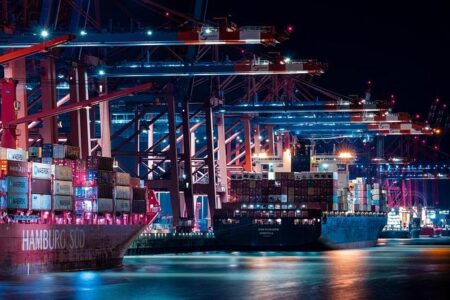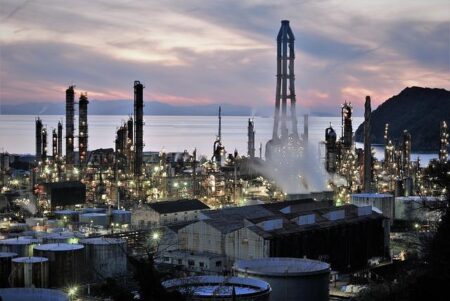Brazil is significantly expanding its liquefied natural gas (LNG) import infrastructure, marking a strategic shift in the country’s energy landscape. According to the U.S. Energy Information Administration (EIA), this development aims to enhance Brazil’s energy security and diversify its fuel sources amid growing domestic demand. The expansion includes upgrades to existing terminals as well as the construction of new facilities, positioning Brazil to increase LNG imports and better integrate into global natural gas markets. This move reflects broader trends in Latin America’s energy sector, where nations are investing in infrastructure to support cleaner and more flexible energy options.
Brazil Accelerates Expansion of LNG Import Terminals to Meet Growing Energy Demand
Amid soaring energy consumption and intermittent hydroelectric production, Brazil is rapidly advancing its liquefied natural gas (LNG) import capabilities to secure a more stable energy supply. The government, in collaboration with private sector partners, has greenlit several new terminals along the coastline, aiming to diversify the nation’s energy portfolio and reduce reliance on volatile hydropower. Enhanced LNG infrastructure will enable Brazil to tap into global natural gas markets more efficiently, particularly during dry seasons when hydroelectric output dips significantly.
Key developments include:
- Expansion of existing LNG receiving terminals in Rio de Janeiro and SĂŁo Paulo regions.
- Construction of three new floating storage and regasification units (FSRUs) strategically placed to facilitate rapid distribution.
- Strengthened partnerships with major LNG exporters, predominantly from the U.S. and Qatar, ensuring steady cargo deliveries.
| Terminal Location | Capacity (MMcm/d) | Expected Completion |
|---|---|---|
| Rio de Janeiro | 15 | Q4 2024 |
| SĂŁo Paulo (new FSRU) | 20 | Q2 2025 |
| Paranaguá | 10 | Q3 2025 |
Strategic Investments Enhance Brazil’s Role in Global Natural Gas Markets
Brazil is making significant strides in developing its liquefied natural gas (LNG) import infrastructure, positioning itself as a key player in the dynamic global gas market. Investments in new regasification terminals along the northeastern and southern coasts are enabling the country to diversify supply sources and improve energy security. These facilities are designed to leverage state-of-the-art technology, with capacity expansions projected to increase LNG import volumes by over 30% within the next five years. This growth not only supports domestic consumption but also strengthens Brazil’s ability to serve as a regional energy hub.
Key elements driving this expansion include:
- Enhanced port facilities equipped for larger LNG carriers
- Investment partnerships between public and private sectors for funding
- Integration with pipeline networks for efficient domestic distribution
- Environmental considerations incorporated in new infrastructure designs
| Facility | Location | Projected Capacity (Bcf/year) | Status |
|---|---|---|---|
| Açu LNG Terminal | Rio de Janeiro | 150 | Under Construction |
| Porto do Itaqui | MaranhĂŁo | 85 | Operational |
| Sepetiba Bay | Rio de Janeiro | 120 | Planned |
Policy Recommendations to Support Sustainable Growth in Brazil’s LNG Infrastructure
To foster a resilient and sustainable expansion of liquefied natural gas import facilities, Brazilian policymakers must prioritize regulatory clarity and streamlined permitting processes. Establishing clear guidelines that balance environmental protections with infrastructure development will attract both domestic and foreign investment. Incentivizing public-private partnerships can also spur innovation and financial participation in upgrading LNG terminals and expanding pipeline networks. Additionally, integrating advanced technologies to minimize methane emissions and energy consumption will align Brazil’s LNG ambitions with global climate commitments.
Strategic investments in workforce training and capacity-building are essential to support long-term maintenance and operational efficiency across the LNG supply chain. Policymakers should consider targeted subsidies or tax incentives for companies adopting green technologies and sustainable practices. Below is a summary of key policy levers that can accelerate sustainable growth in Brazil’s LNG infrastructure:
| Policy Focus | Expected Impact |
|---|---|
| Regulatory Streamlining | Faster project approvals, reduced costs |
| Environmental Standards | Lower emissions, improved ecosystem protection |
| Public-Private Partnerships | Increased investment, technological innovation |
| Workforce Development | Skilled labor, improved operational safety |
| Financial Incentives | Adoption of clean tech, enhanced competitiveness |
Future Outlook
As Brazil continues to bolster its liquefied natural gas import infrastructure, the move signals a strategic effort to diversify energy sources and enhance supply security amid growing domestic demand. According to the U.S. Energy Information Administration, these developments not only position Brazil to better navigate global energy markets but also reflect broader regional shifts toward more flexible and resilient energy systems. Observers will be closely watching how these investments impact Brazil’s energy landscape and its role in the evolving global LNG market in the coming years.




